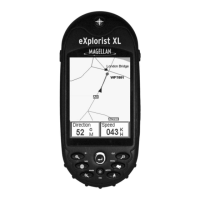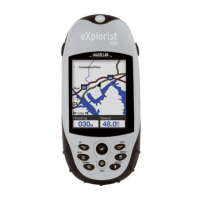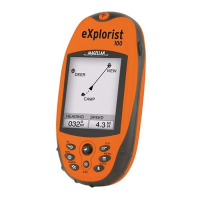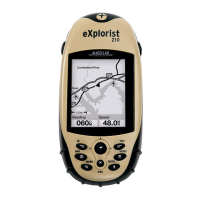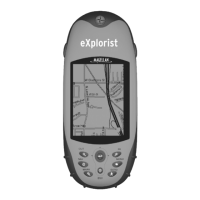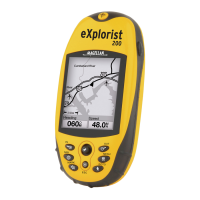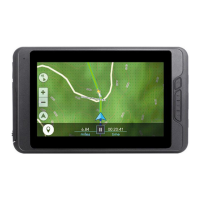31
Whether driving
in
a
car,
hiking
on
the trail,
or
out
for
an
afternoon sail,
you
are
going to want to
save
places you've
been
in
your eXplorist
so
that
you
can
go
back to them
in
the future. This
is
the
fundamental starting point for
any
GPS
navigator.
Saving these places
is
called uMarking
Your
position"
or
just
MARK
for short.
The
saved
positions
are
called points of interest,
or
just
POls.
(You
may
have
heard
the term
Hwaypoi
nts"
to
describe marked positions. Waypoints
and
points of
interest
are
identical.)
There
are
four types of
POls
available for
your
eXplorist 500:
POls
that
you
have
marked
(saved),
POls
that
have
been
stored
in
your eXplorist
as
part of the built-in background
map,
POls
that
have
been
uploaded using the geocaching software,
and
POls
that
have
been
uploaded
from a detailed
map.
These
POls
are
accessed
from the
same
MENU
option
and
can
be
used
independently
or
combined to create routes.
The
most common
way
of adding
POls
to the database will
be
to mark your present position.
There
are
two levels of marking your position.
The
first that will
be
described will
be
quick-
marking your position.
The
second
method provides
you
with the
means
to personalize
POls
you
are
savi
ng.
Quick
Marking
Your
Position
This
saves
your present position
in
the database using mark-
position defaults.
1.
Press
MARK.
2.
Press
ENTER.
3. Select the file to
save
the
POI
in
and
press
ENTER.
Note: If a position fix
is
not being computed
or
if
only a
2D
position fix
(no
elevation information)
is
being computed, a
warning will
be
displayed asking
you
to confirm that
you
still Sample Mark
Screen
want to
save
this position.
When
you
save
a
2D
position fix
you
will notice that
even
though elevation
was
not
computed, that a elevation value
is
included
as
part of the
POI.
This elevation
is
the last
elevation that
was
computed
by
the eXplorist.
Tip:
Later
in
this manual
you
will
see
a
way
to modify the icon,
name,
and
message
of
positions
you
have
quick-marked.
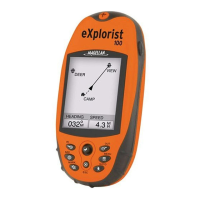
